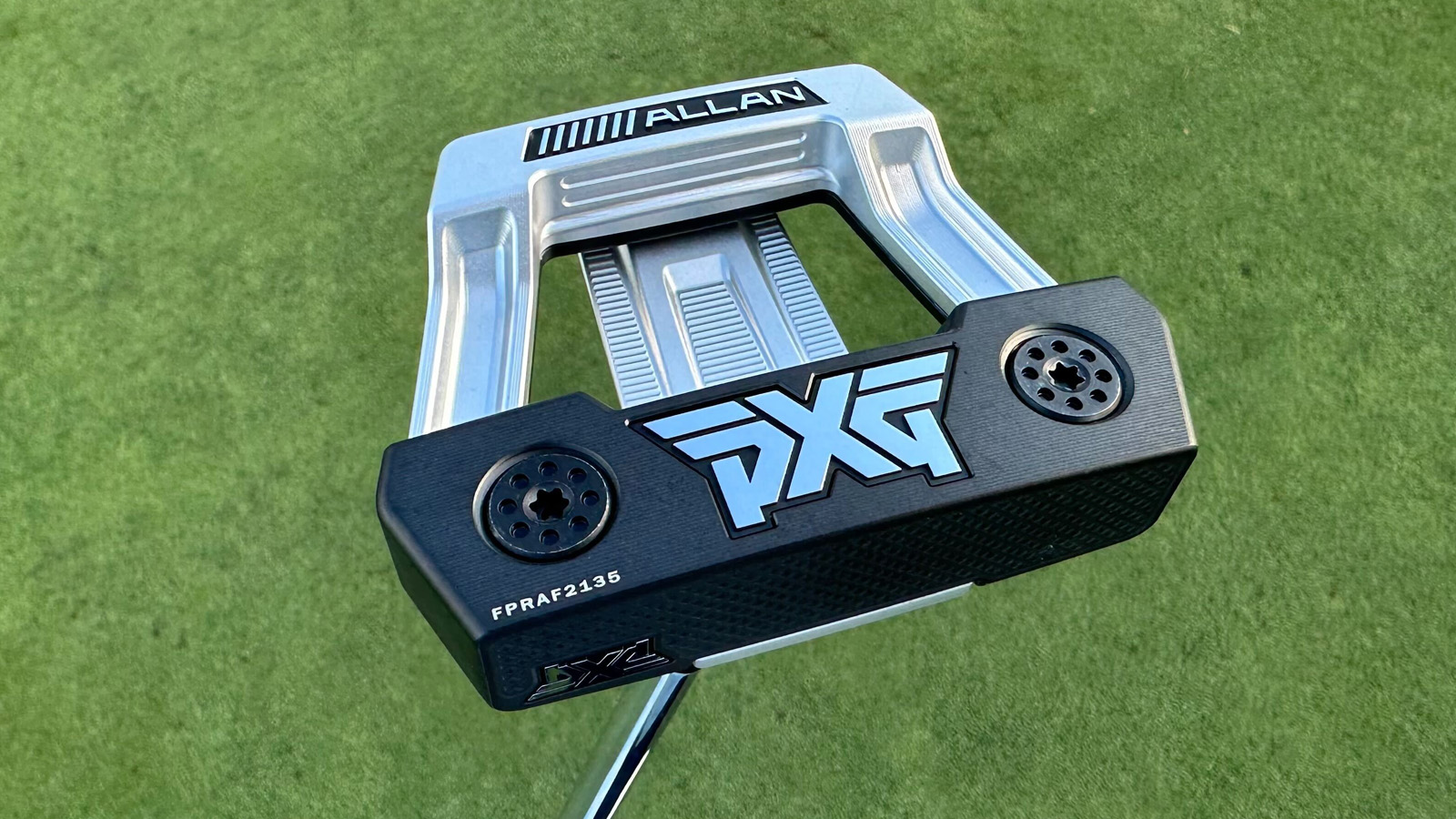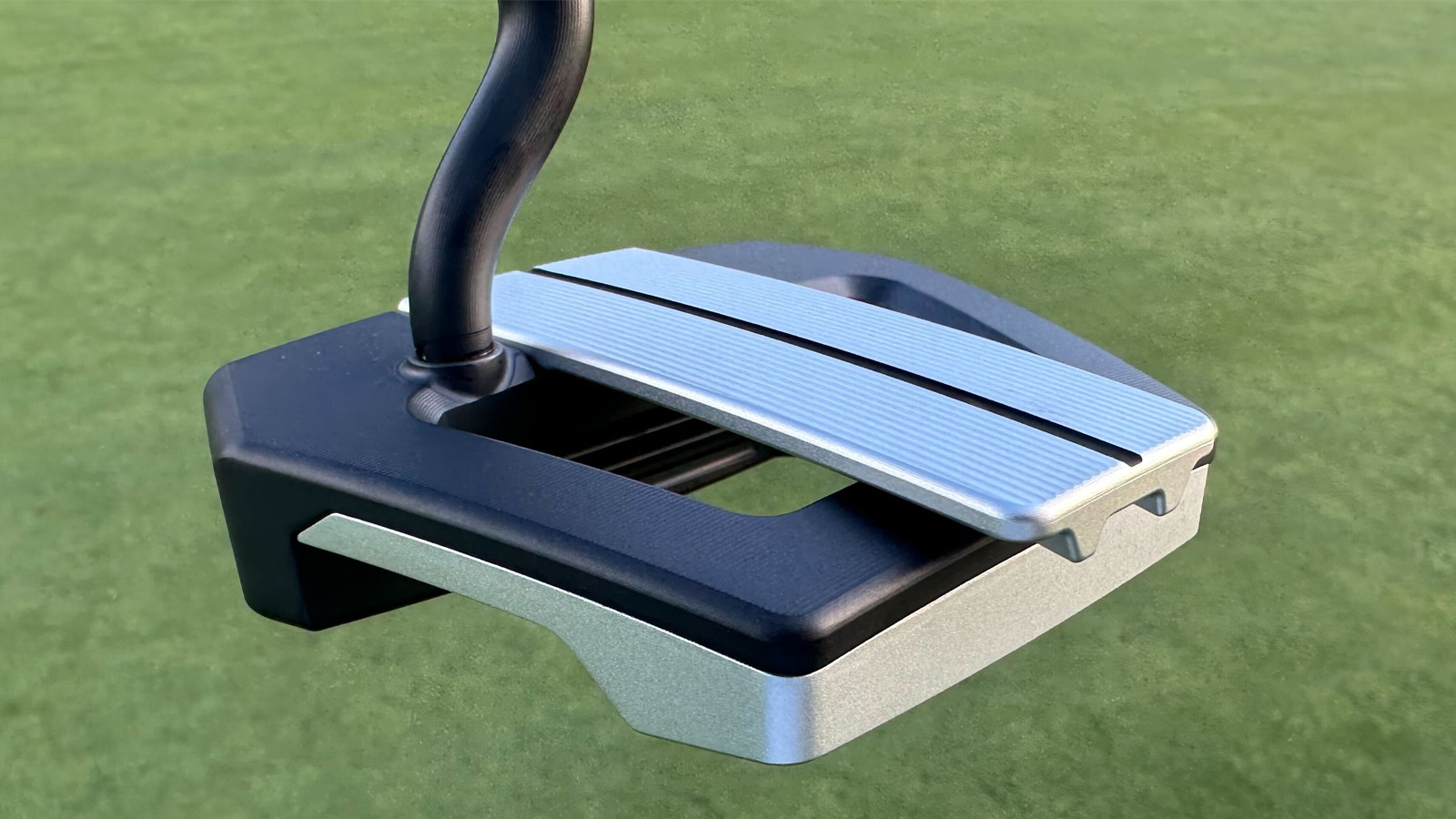PXG Allan Putter Review
Sam De’Ath tests the PXG Allan Putter on the course to see if the Zero Torque Balance Technology can help his performance on the greens

The PXG Allan putter demonstrates the forward thinking notion synonymous with the brand. While it may take a while to get used to because of its unorthodox looks, this putter offers superb feel and stability with technology to help out even the most troubled golfers on the greens.
-
+
Much improved feel over previous PXG putter lines
-
+
Plenty of alignment benefits
-
+
Minimizes face rotation and improves stability
-
-
Address position will take some getting used to
Why you can trust Golf Monthly

The PXG Allan putter was named in memory of PXG founder and CEO, Bob Parsons younger brother Allan who was known for saying “we’re not here for a long time, we’re here for a good time”. Bob Parsons wanted to create a putter that made golfers have more fun on the course and a key way of doing that is by designing a forgiving putter that he hopes will help golfers hole more putts.
WATCH: We run through the best putters of 2024
Personally, I tend to sway more towards the more conventional side of things when it comes to putting, preferring the look of a bladed putter over a mallet putter and a putter with little to no alignment features. But when I saw the technology and design of the PXG Allan putter, I couldn’t help but feel intrigued.

PXG Allan putter
Lie angle balanced putters have seen a huge rise in popularity over the past couple of years and are no doubt considered some of the best putters on the market. The L.A.B. Golf DF3 and Mezz 1 putters are used by the the likes of Adam Scott, Lucas Glover and Will Zalatoris who have all seen success with one in the bag. The Allan is PXG's own spin on the concept with something called Zero Torque Balance Technology. The idea behind it is to keep the face of the putter staying square to the path of the putting stroke through its entirety. By eliminating twisting and torque, golfers can focus much more on aiming, rather than the mechanics of the stroke.

The 'S' hosel on the PXG Allan putter is part of the Zero Torque Balance Design
If you’re someone who likes the look of a blade or even a traditional looking mallet, the Allan putter will take some getting used to when sat behind the ball. It features a new ‘S’ hosel design, which allows the shaft axis to be positioned directly above the center of gravity, which in turn creates a toe-up balance point said to reduce twisting and enhance stability. Because of the unique placement of the hosel, the putter does sit with the face looking significantly onset, which was something I really struggled to come to terms with, but because of the shaft leaning forward, your hands are placed automatically into a natural forward press position and not behind the ball as it initially feels like.

The PXG Allan putter at address
Like with the Battle Ready II putters, a multi-material M16 putter shaft option is available in the Allan putter at an upcharge, which I personally feel is worth it but does add to the cost of an already pricey putter ($449). The Multi-material shaft is designed to improve balance and a smoother stroke. The face is a refined version of the pyramid face pattern found on the Battle Ready II putters. When testing the Battle Ready II Bat Attack putter, I found the face far too harsh and firm and so I was pleasantly surprised when feeling how soft and different the Allan putter felt through impact.
The face itself is what PXG are calling the thinnest face ever in a putter. At just 0.055 inches thick, it would be hard to argue. This thin face design has a S COR Polymer injected behind it to help dampen vibrations and improve acoustics. With this clever design, you receive the feel of a premium milled putter which sounds and feels great and rolls the ball very well.
Subscribe to the Golf Monthly newsletter to stay up to date with all the latest tour news, equipment news, reviews, head-to-heads and buyer’s guides from our team of experienced experts.

The new pyramid face design on the PXG Allan putter
The large mallet is made from a few different components in order to make it one of the most effective and most forgiving putters money can buy. The bulk of the putter is made from 303 stainless steel hollow body construction which is then combined with a lightweight aluminium alignment aid and sole. The weight has been redistributed towards the perimeter of the head and the two adjustable weights on the sole increase MOI and allow golfers to dial in a preferred swing weight.

Sam De'Ath testing the PXG Allan putter on the golf course
The aluminium alignment feature on the top frames the ball nicely and certainly helped starting the ball on line from 10ft and in. The lack of alignment features is where you could argue LAB putters like the DF3 putter fall down, but there's plenty on offer with the Allan. I found the combination of the onset head design and large alignment aid a little too distracting on big breaking putts or when trying to focus on lag putting but that is something I’m sure would improve the longer I use the putter for.
I holed a surprising amount of mid range putts with the Allan on initial testing. There's no question that very little manipulation was required to get the face back to square. Overall it feels comfortable in your hands and you soon become familiar with how it swings. The feel is one the firm side but you really notice the stability on offer when the strike pattern moves around - it's undoubtedly a user-friendly putter.
On the sole there is a pick-up pocket which allows golfers to retrieve the ball from the playing surface without having to bend down - a handy feature for those like myself with lower back problems.

The ball retriever mechanism on the sole is a great addition to the PXG Allan putter
So who would really benefit from this putter? The best putters in the world at any level of the game are exceptional at knocking in those nervy short putts, so if you find yourself missing the majority of those the Allan putter is certainly worth checking out. Price wise, they come in similar to a LAB Golf putter and the extra aim assistance could certainly help inconsistent golfers a little more visually.
It's hard to say with any certainty if the Allan is as good as or better than the DF3 - they've certainly gone about it in significantly different ways to achieve a similar end result. If you just want to try something completely different and that looks like nothing you’ve probably tried before, then the PXG Allan putter may be a great putter to reset your approach on the greens.

Sam has worked in the golf industry for 14 years, offering advice on equipment to all levels of golfers. Sam heads up any content around fairway woods, hybrids, wedges, putters, golf balls and Tour gear.
Sam graduated from Webber International University in 2017 with a BSc Marketing Management degree while playing collegiate golf. His experience of playing professionally on both the EuroPro Tour and Clutch Pro Tour, alongside his golf retail history, means Sam has extensive knowledge of golf equipment and what works for different types of golfers.